This little church is on a tiny island off the Shetland mainland. It has few inhabitants, many unusually coloured sheep, and incredible, wild landscapes. | 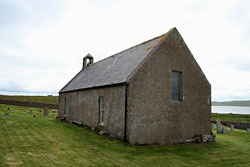 |
In 1921, Victor Rainbird, from Yorkshire, designed and painted "Jesus Calming the Storm" in memory of six islanders who died in WW1. Beautifully painted, it is the only window in existance by this artist. Unusually, it had been installed from the inside. | 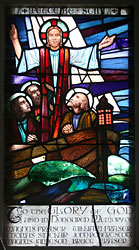 |
The window had suffered over time, and needed to be removed for restoration. However, it had not been installed by professional stained glass artists, and refused to come quietly. Eventually we had to dismantle it, in situ, piece by piece. | 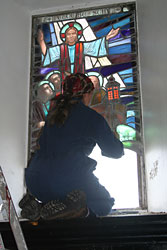 |
There was only one ferry on and off the island - on at 9am and off at 7pm. Time was not on our side. We took it in turns to carefully strip the window, which refused to move right up until the last piece. | 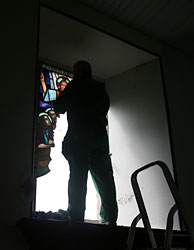 |
Seven pieces of glass had been poorly restored in the past, using cold oil paints which were flaking and insightly. (Mid left and bottom right) | 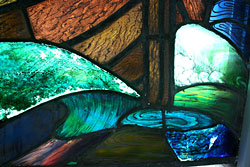 |
Although most of the window is beautifully painted, the bottom inscription had been fired twice: the first firing, with black paint, had been overfired. A reddish brown paint was fired over the black, and the whole was smeared with a white putty residue. | 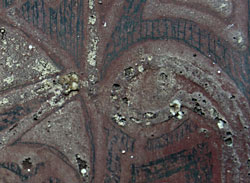 |
A binocular microscope was essential to ensure that no damage was done to the fragile paint during cleaning. | 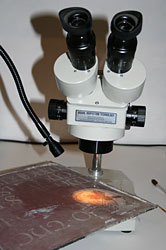 |
The whole window was covered in an unsightly white coating - a smear of putty / cement from the previous restoration, which had not been properly cleaned before installation. | 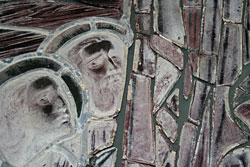 |
Most of the paint in the window was in excellent condition, and beautifully fired. Soaking each piece overnight in water allowed the putty to be easily rinsed off using a soft cloth without damaging the paint or the glass. This cleaning methodology was not used for the inscription, which was manually cleaned using the microscope. | 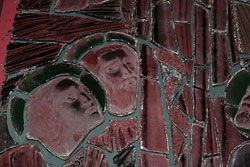 |
There are more sheep than people living on Papa Stour. They are beautiful and have naturally multi-coloured fleeces. These sheep were grazing next to the church. | 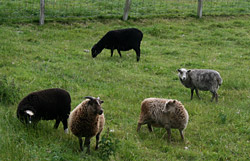 |
After cleaning, each piece of glass was carefully leaded back together. | 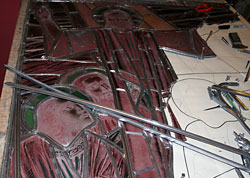 |
A return ferry in the autumn to re-install the window | 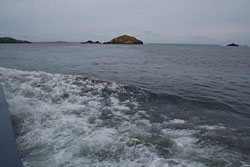 |
We were carefully watched by the locals, one of whom we later ate back in Glasgow. | 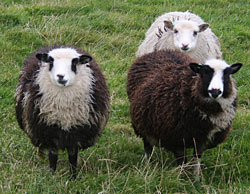 |
A mobile studio was set up in the church to carry out any last-minute "tweaking". Our thanks to local Shetland joiner, Craig Redfern, and to Jane Puckey from the Papa Stour History Group. | 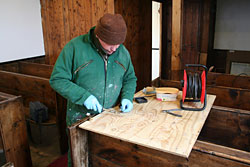 |
The fully restored window lit up the newly painted walls before the light faded and we got off the tiny, remote island. The window was re-dedicated in December 2009, and we wish all the residents of Papa Stour well, with grateful thanks for their hospitality. | 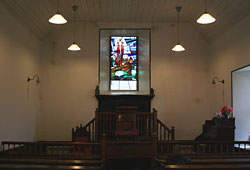 |